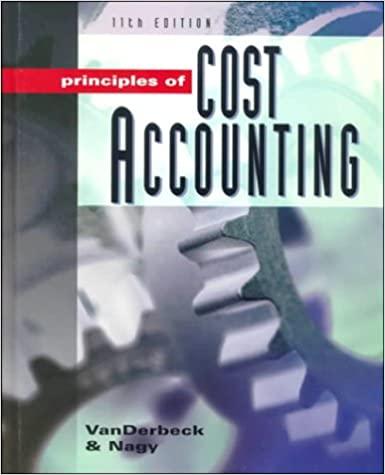Assess the financing proposals in terms of attractiveness in cost and associated risk. Please evaluate the following financing alternatives: bank loan, mortgage bond, common stock, preferred stock with warrants and convertible bond. Your analysis should consider qualitative and quantitative issues. Which financing option do you recommend for Rondo and why? Provide an executive summary analyzing your results, and make a recommendation.


1:04 PM Sat Nov 27 80% Done MGT 6001 - F2.21 - Examples - Week 6 Week 6 RONDO - FINANCING ALTERNATIVES RONDO FINANCING ALTERNATIVES MGT 6001 - F2.21 - Exambles - Week 6 Notes Re Rondo WEEK 6 Rondo 8 - Financing Proposals Assumptions/Steps (Note - Assumptions/Steps 1 through 8 below are included for informational purposes only. The related calculations are already included in the tab/worksheet "RONDO-FINANCING ALTERNATIVES" included in the Examples - Week 6 Excel file/workbook): 1. Perform the analysis as of 12/31/2019. 2. Ignore the Poly Pipe purchase (use the amount offered without the Poly Pipe purchase for the Mortgage Bond and Preferred Stock alternatives). 3. For the Common Stock alternative, assume that Rondo needs to raise $8 million net proceeds (after underwriting costs). 4. Calculate the annual payments to be made for each of 2020 through 2025 for each of the 5 potential funding sources. The annual payments include (i) interest or dividends, as appropriate, net of any applicable tax benefit, plus (ii) any scheduled principal repayments. As a refresher, Chapter 9 (Cost of Capital) discusses which types of capital receive a tax benefit. 5. Regarding the preferred stock - Calculate the annual dividends, net of any applicable tax benefit, and determine what the net (after-tax) coupon rate is. Also calculate what the dilution to common shareholders would be, by way of number of new shares and as a % of shares currently outstanding, if the warrants were exercised. 6. Based upon the interest/dividend portions of the above calculations, calculate the after-tax cost of each alternative. Also, based upon the above, calculate total annual payments. 7. Refer to Rondo's forecast we covered earlier in the course and consider whether, or not, Rondo will be able to make the required annual payments. 8. Where applicable for a potential funding source, calculate dilution (or potential dilution) to Rondo's existing common shareholders. ASSIGNMENT DELIVERABIE: Executive Summary - RANK the potential funding sources from 1 st through 5 th choices, and DISCUSS WIYY. Be sure to discuss the pros and cons of each potential funding source and your reasoning for your ranking. There is no one correct answer. It's your reasoning/logic that matters. 1:04 PM Sat Nov 27 80% Done MGT 6001 - F2.21 - Examples - Week 6 Week 6 RONDO - FINANCING ALTERNATIVES RONDO FINANCING ALTERNATIVES MGT 6001 - F2.21 - Exambles - Week 6 Notes Re Rondo WEEK 6 Rondo 8 - Financing Proposals Assumptions/Steps (Note - Assumptions/Steps 1 through 8 below are included for informational purposes only. The related calculations are already included in the tab/worksheet "RONDO-FINANCING ALTERNATIVES" included in the Examples - Week 6 Excel file/workbook): 1. Perform the analysis as of 12/31/2019. 2. Ignore the Poly Pipe purchase (use the amount offered without the Poly Pipe purchase for the Mortgage Bond and Preferred Stock alternatives). 3. For the Common Stock alternative, assume that Rondo needs to raise $8 million net proceeds (after underwriting costs). 4. Calculate the annual payments to be made for each of 2020 through 2025 for each of the 5 potential funding sources. The annual payments include (i) interest or dividends, as appropriate, net of any applicable tax benefit, plus (ii) any scheduled principal repayments. As a refresher, Chapter 9 (Cost of Capital) discusses which types of capital receive a tax benefit. 5. Regarding the preferred stock - Calculate the annual dividends, net of any applicable tax benefit, and determine what the net (after-tax) coupon rate is. Also calculate what the dilution to common shareholders would be, by way of number of new shares and as a % of shares currently outstanding, if the warrants were exercised. 6. Based upon the interest/dividend portions of the above calculations, calculate the after-tax cost of each alternative. Also, based upon the above, calculate total annual payments. 7. Refer to Rondo's forecast we covered earlier in the course and consider whether, or not, Rondo will be able to make the required annual payments. 8. Where applicable for a potential funding source, calculate dilution (or potential dilution) to Rondo's existing common shareholders. ASSIGNMENT DELIVERABIE: Executive Summary - RANK the potential funding sources from 1 st through 5 th choices, and DISCUSS WIYY. Be sure to discuss the pros and cons of each potential funding source and your reasoning for your ranking. There is no one correct answer. It's your reasoning/logic that matters









